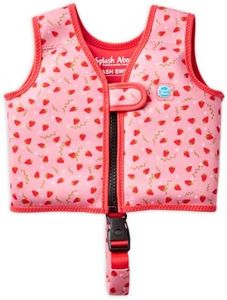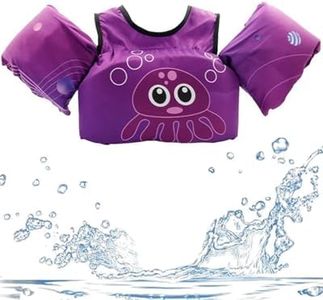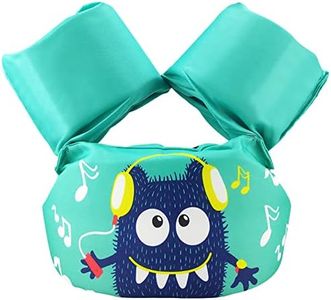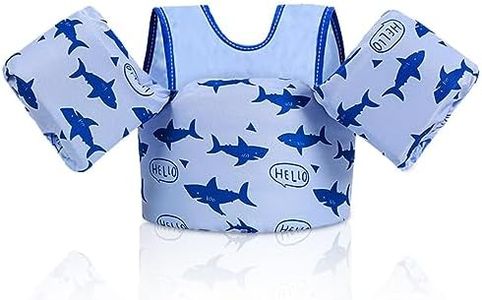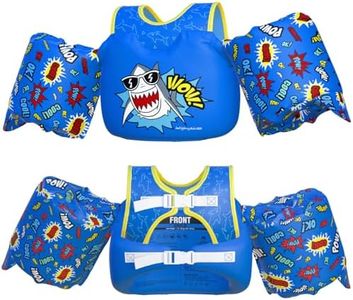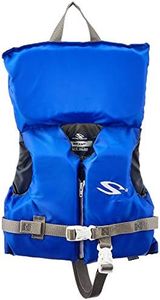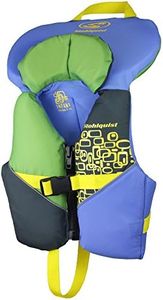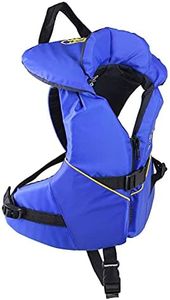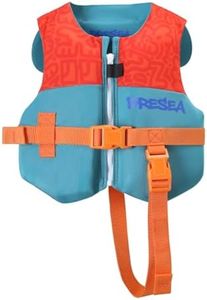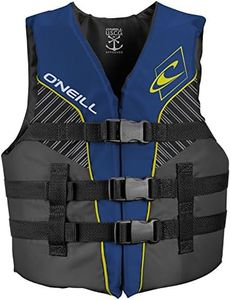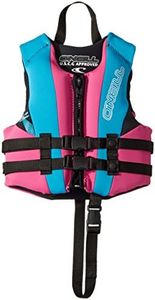We Use CookiesWe use cookies to enhance the security, performance,
functionality and for analytical and promotional activities. By continuing to browse this site you
are agreeing to our privacy policy
10 Best Life Jacket For Kids
From leading brands and best sellers available on the web.Buying Guide for the Best Life Jacket For Kids
When choosing a life jacket for kids, safety should be your number one priority. It's important that the jacket is both comfortable and able to keep your child afloat, especially in unexpected situations around water. A good life jacket should fit well, be easy for your child to move in, and match their age, size, and intended activities (like swimming, boating, or water sports). Always look for jackets that comply with recognized safety standards to make sure you're getting proper protection.Size and FitSize and fit refer to how well the life jacket wraps around your child's body. A proper fit is crucial to ensure the jacket works as intended. Life jackets come in sizes based on your child's weight range. Choose a size that matches your child's current weight—not their age—because a jacket that’s too big can slip off, and one that’s too tight will be uncomfortable and may restrict movement. Always test the fit by fastening all straps and lifting the jacket by the shoulders; it should stay put and not ride up over the chin or face.
Buoyancy RatingBuoyancy rating tells you how much flotation force the jacket provides, usually measured in pounds or newtons. For kids, this is important to ensure they stay above water. Most children’s life jackets provide enough buoyancy for their size, but those intended for activities like rough water or non-swimmers may offer a higher rating. Assess your child’s swimming ability and water activities; if they’re inexperienced or will be in open or rough waters, pick one with a higher buoyancy. For calm waters and playful swimmers, standard ratings are usually enough.
Type/DesignLife jackets come in different types and designs: some are meant for active swimming, while others are for emergencies or boating. For children, look for designs that offer a head pillow or collar to help keep their head above water, and crotch straps to prevent the jacket from riding up. Consider the activity your child will be doing; for boating, pick a type specifically approved for that use, while for pool play, designs that allow more movement may be preferred.
Ease of Use and ComfortEase of use and comfort matter because kids are more likely to wear a life jacket that feels good and is easy to put on. Look for features like smooth zippers, quick-release buckles, soft inner linings, and no rough edges. The jacket should not chafe or pinch. Try it on your child before using it in the water; if they feel happy and comfortable, the chances of them keeping it on increase.
VisibilityVisibility is how easily your child can be seen in the water, which is very important for safety. Life jackets for kids often come in bright colors like orange, yellow, or red and may have reflective panels. High-visibility jackets help rescuers or parents keep sight of their child at all times, especially in crowded or low-light environments. Pick a life jacket in a bold color so you can easily spot your child.
Certification and Safety StandardsCertification means the jacket meets certain safety tests set by recognized organizations. Look for certifications like U.S. Coast Guard approval or equivalent local standards. This assures you that the jacket has undergone safety checks and will perform as intended. Only choose life jackets that are clearly marked as certified for children of your child’s size and weight, as uncertified products may not offer reliable protection.
